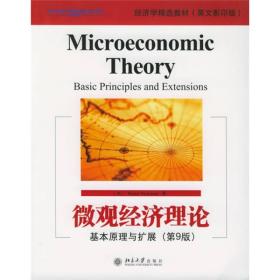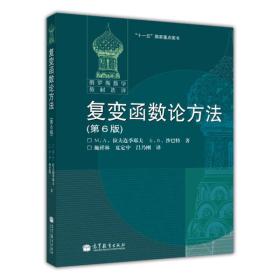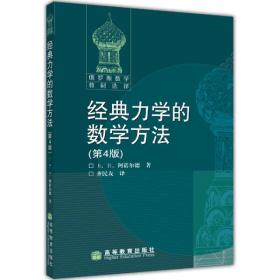
现代电力系统分析(第3版)
¥ 20 2.6折 ¥ 78 全新
仅1件
宁夏银川
认证卖家担保交易快速发货售后保障
作者科萨里(Kothari.DP)、纳格拉斯(Nagrath.IJ) 著
出版社清华大学出版社
出版时间2009-12
版次3
装帧平装
上书时间2024-09-29
- 在售商品 暂无
- 平均发货时间 5天
- 好评率 暂无
- 最新上架
商品详情
- 品相描述:全新
图书标准信息
- 作者 科萨里(Kothari.DP)、纳格拉斯(Nagrath.IJ) 著
- 出版社 清华大学出版社
- 出版时间 2009-12
- 版次 3
- ISBN 9787302215745
- 定价 78.00元
- 装帧 平装
- 开本 16开
- 纸张 胶版纸
- 页数 694页
- 正文语种 英语
- 【内容简介】
- 《现代电力系统分析(第3版)》中包含了大量的例题,它们除了说明具体的计算方法和过程以外,还可以让读者顺便了解很多实际知识(例如元件及系统的结构和参数等)。有的则通过例题介绍其他方面的内容和知识(例如,在例2.4中引入通信干扰和谐波等知识),从而扩大了《现代电力系统分析(第3版)》所包含的信息量。另外,书中还给出了大量的习题并附有相应的答案,以便读者进一步巩固和深化有关的理论和分析方法。特别地,这些例题和习题有助于读者进行自学。
- 【作者简介】
-
DPKothari,isProfessor,CentreforEnergyStudies,IndianInstituteofTechnology,Delhi.HehasbeenHeadoftheCentreforEnergyStudies(1995-97)andPrincipal(1997-98)VisvesvarayaRegionalEngineeringCollege,Nagpur.HehasbeenDirector-incharge,liTDelhi(2005),DeputyDirector(Admn.)(2003-2006).Earlier(1982-83and1989),hewasavisitingfellowatRMIT,Melbourne,Australia.HeobtainedhisBE,MEandPh.DdegreesfromBITS,Pilani.AfellowoftheInstitutionofEngineers(India),fellowofNationalAcademyofEngineering,fellowofNationalAcademyofSciences,SeniorMemberIEEE,MemberIEE,LifeMemberISTE,ProfessorKotharihaspublished/presentedaround500papersinnationalandinternationaljournals/conferences.Hehasauthored/co-authoredmorethan18books,includingPowerSystemOptimization,ModernPowerSystemAnalysis,ElectricMachines,PowerSystemTransients,TheoryandProblemsofElectricMachinesandBasicElectricalEngineering.Hisresearchinterestsincludepowersystemcontrol,optimization,reliabilityandenergyconservation.HehasreceivedtheNationalKhoslaawardforLifetimeAchievementsinEngineeringfor2005fromliTRoorkee.
IJNagrathisAdjunctProfessor,BITS,Pilani,andretiredasProfessorofelectricalengineeringandDeputyDirectorofBirlaInstituteofTechnologyandScience,Pilani.HeobtainedhisBEwithHons.inelectricalengineeringfromtheUniversityofRajasthanin1951andMSfromtheUniversityofWisconsinin1956.Hehasco-authoredseveralsuccessfulbookswhichincludeElectricMachines,ModernPowerSystemAnalysisandSystems:ModellingandAnalysis.Hehasalsopublishedseveralresearchpapersinprestigiousnationalandinternationaljournals. - 【目录】
-
PrefacetoThirdEdition
PrefacetoFirstEdition
1.Introduction
1.1APerspective
1.2StructureofPowerSystems
1.3ConventionalSourcesofElectricEnergy
1.4RenewableEnergySources
1.5EnergyStorage
1.6GrowthofPowerSystemsinIndia
1.7EnergyConservation
1.8Deregulation
1.9DistributedandDispersedGeneration
1.10EnvironmentalAspectsofElectricEnergyGeneration
1.11PowerSystemEngineersandPowerSystemStudies3!
1.12UseofComputersandMicroprocessors
1.13ProblemsFacingIndianPowerIndustryanditsChoices
References
2.InductanceandResistanceofTransmissionLines
2.1Introduction
2.2DefinitionofInductance
2.3FluxLinkagesofanIsolatedCurrent-CarryingConductor
2.4InductanceofaSingle-PhaseTwo-WireLine
2.5ConductorTypes
2.6FluxLinkagesofoneConductorinaGroup
2.7InductanceofCompositeConductorLines
2.8InductanceofThree-PhaseLines
2.9Double-CircuitThree-PhaseLines
2.10BundledConductors
2.11Resistance
2.12SkinEffectandProximityEffect
Problems
References
3.CapacitanceofTransmissionLines
3.1Introduction
3.2ElectricFieldofaLongStraightConductor
3.3PotentialDifferencebetweentwoConductorsofaGroupofParallelConductors
3.4CapacitanceofaTwo-WireLine
3.5CapacitanceofaThree-PhaseLinewithEquilateralSpacing
3.6CapacitanceofaThree-PhaseLinewithUnsymmetricalSpacing
3.7EffectofEarthonTransmissionLineCapacitance
3.8MethodofGMD(Modified)
3.9BundledConductors
Problems
References
4.RepresentationofPowerSystemComponents
4.1Introduction
4.2Single-phaseSolutionofBalancedThree-phaseNetworks
4.3One-LineDiagramandImpedanceorReactanceDiagram
4.4PerUnit(PU)System
4.5ComplexPower
4.6SynchronousMachine
4.7RepresentationofLoads
Problems
References
5.CharacteristicsandPerformanceofPowerTransmissionLines
5.1Introduction
5.2ShortTransmissionLine
5.3MediumTransmissionLine
5.4TheLongTransmissionLine——RigorousSolution
5.5InterpretationoftheLongLineEquations
5.6FerrantiEffect
5.7TunedPowerLines
5.8TheEquivalentCircuitofaLongLine
5.9PowerFlowthroughaTransmissionLine
5.10MethodsofVoltageControl
Problems
References
6.LoadFlowStudies
6.1Introduction
6.2NetworkModelFormulation
6.3FormationofYBusbySingularTransformation
6.4LoadFlowProblem
6.5Gauss-SeidelMethod
6.6Newton-Raphson(NR)Method
6.7DecoupledLoadFlowMethods
6.8ComparisonofLoadFlowMethods
6.9ControlofVoltageProfile
Problems
References
7.0ptimalSystemOperation
7.1Introduction
7.2OptimalOperationofGeneratorsonaBusBar
7.3OptimalUnitCommitment(UC)
7.4ReliabilityConsiderations
7.5OptimumGenerationScheduling
7.6OptimalLoadFlowSolution
7.7OptimalSchedulingofHydrothermalSystem
Problems
References
8.AutomaticGenerationandVoltageControl
8.1Introduction
8.2LoadFrequencyControl(SingleAreaCase)
8.3LoadFrequencyControlandEconomicDespatchControl
8.4Two-AreaLoadFrequencyControl
8.5Optimal(Two-Area)LoadFrequencyControl
8.6AutomaticVoltageControl
8.7LoadFrequencyControlwithGenerationRateConstraints(GRCs)
8.8SpeedGovernorDead-BandandItsEffectonAGC
8.9DigitalLFControllers
8.10DecentralizedControl
Problems
References
9.SymmetricalFaultAnalysis
9.1Introduction
9.2TransientonaTransmissionLine
9.3ShortCircuitofaSynchronousMachine(OnNoLoad)
9.4ShortCircuitofaLoadedSynchronousMachine
9.5SeIectionofCircuitBreakers
9.6AlgorithmforShortCircuitStudies
9.7ZBusFormulation
Problems
References
10.SymmetricalComponents
10.1Introduction
10.2SymmetricalComponentTransformation
10.3PhaseShiftinStar-DeltaTransformers
10.4SequenceImpedancesofTransmissionLines
10.5SequenceImpedancesandSequenceNetworkofPowerSystem
10.6SequenceImpedancesandNetworksofSynchronousMachine
10.7SequenceImpedancesofTransmissionLines
10.8SequenceImpedancesandNetworksofTransformers
10.9ConstructionofSequenceNetworksofaPowerSystem
Problems
References
11.UnsymmetricalFaultAnalysis
11.1Introduction
11.2SymmetricalComponentAnalysisofUnsymmetricalFaults
11.3SingleLine-To-Ground(LG)Fault
11.4Line-To-Line(LL)Fault
11.5DoubleLine-To-Ground(LLG)Fault
11.6OpenConductorFaults
11.7BusImpedanceMatrixMethodForAnalysisofUnsymmetricalShuntFaults
Problems
References
12.PowerSystemStability
12.1Introduction
12.2DynamicsofaSynchronousMachine
12.3PowerAngleEquation
12.4NodeEliminationTechnique
12.5SimpleSystems
12.6SteadyStateStability
12.7TransientStability
12.8EqualAreaCriterion
12.9NumericalSolutionofSwingEquation
12.10MultimachineStability
12.11SomeFactorsAffectingTransientStability
Problems
References
13.PowerSystemSecurity
13.1Introduction
13.2SystemStateClassification
13.3SecurityAnalysis
13.4ContingencyAnalysis
13.5SensitivityFactors
13.6PowerSystemVoltageStability
References
14.AnIntroductiontoStateEstimationofPowerSystems
14.1Introduction
14.2LeastSquaresEstimation:TheBasicSolution
14.3StaticStateEstimationofPower
Systems
14.4TrackingStateEstimationofPowerSystems
14.5SomeComputationalConsiderations
14.6ExternalSystemEquivalencing
14.7TreatmentofBadData
14.8NetworkObservabilityandPseudo-Measurements
14.9ApplicationofPowerSystemStateEstimation5.5
Problems
References
15.CompensationinPowerSystems
15.1Introduction
15.2LoadingCapability
15.3LoadCompensation
15.4LineCompensation
15.5SeriesCompensation
15.6ShuntCompensators
15.7ComparisonbetweenSTATCOMandSVC
15.8FlexibleACTransmissionSysteins(FACTS)56~
15.9PrincipleandOperationofConverters
15.10FactsControllers
References
16.LoadForecastingTechnique
16.1Introduction
16.2ForecastingMethodology
16.3EstimationofAverageandTrendTerms
16.4EstimationofPeriodicComponents
16.5EstimationofYs(k):TimeSeriesApproach
16.6EstimationofStochasticComponent:KalmanFilteringApproach
16.7Long-TermLoadPredictionsUsingEconometricModels
16.8ReactiveLoadForecast
References
17.VoltageStability
17.1Introduction
17.2ComparisonofAngleandVoltageStability
17.3ReactivePowerFlowandVoltageCollapse
17.4MathematicalFormulationofVoltageStabilityProblem
17.5VoltageStabilityAnalysis
17.6PreventionofVoltageCollapse
17.7State-of-the-Art,FutureTrendsandChallenges
References
AppendixA:IntroductiontoVectorandMatrixAlgebra
AppendixB:GeneralizedCircuitConstants
AppendixC:TriangularFactorizationandOptimalOrdering
AppendixD:ElementsofPowerSystemJacobianMatrix
AppendixE:Kuhn.TuckerTheorem
AppendixF:Real-timeComputerControlofPowerSystems
AppendixG:IntroductiontoMATLABandSIMULINK
AnswerstoProblems
Index
点击展开
点击收起
相关推荐
— 没有更多了 —






















以下为对购买帮助不大的评价